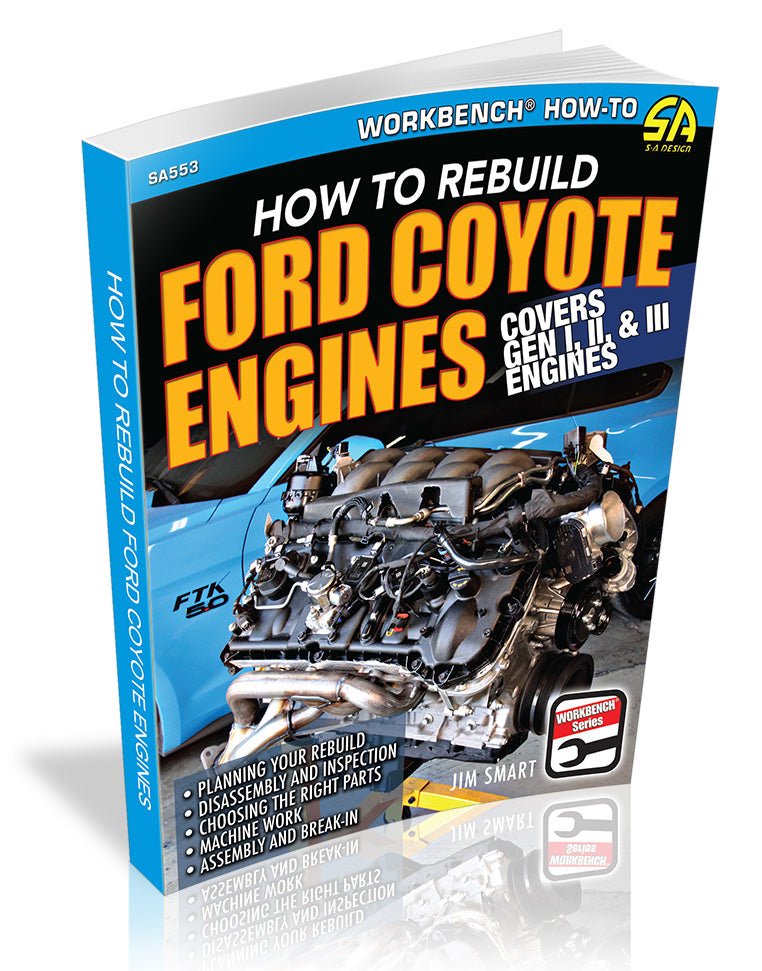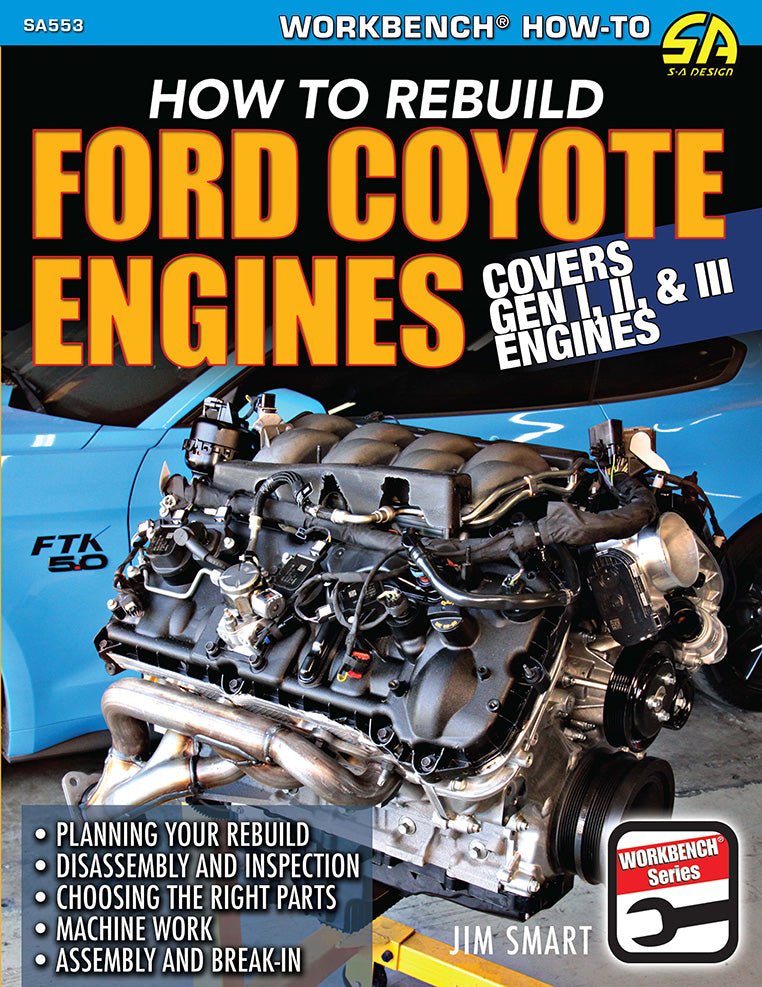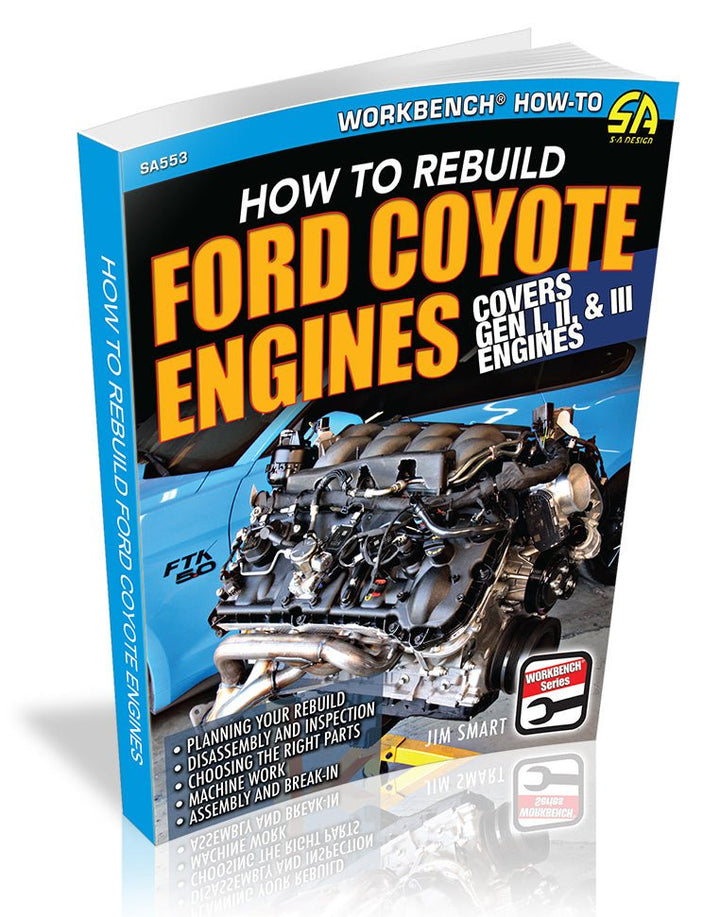In the early 1990s, Ford moved away from its decades-old small-block pushrod V-8 engine designs and introduced a new “modular” overhead-cam (OHC) V-8 engine, which was the 4.6L V-8. This design was used in all of Ford’s V-8 applications—from F-150 trucks to Mustangs and Crown Victorias. After 20 years of the 4.6L engine, it was once again time for a major update, and the Coyote V-8 engine was introduced for the 2011 model year. While more evolutionary than revolutionary, displacement was increased from 4.6L to 5.0L, and every part of the engine was improved with modern technology. The Coyote engine is simply better and more powerful than its predecessors.
Now, the Coyote engine is nearly 15 years old. While they are very durable engines, the older units have accumulated a significant number of miles and are starting to wear out. In Ford Coyote Engines: How to Rebuild, industry veteran Jim Smart takes you through all of the steps to return your Coyote engine to like-new condition. Heads, cams, the valvetrain, rotating assemblies, engine blocks, machining, break-in, and tuning are all covered.
In addition, Smart provides an in-depth history of the four different Coyote engine generations and provides expert knowledge about planning your build, parts selection, and the engine math that is required to make the best rebuild decisions. Whether you want to do your own rebuild or farm it out to a professional (as an informed customer), this book provides all of the knowledge you need to return your Coyote engine to its former glory.
Acknowledgments
Chapter 1: Introduction to the Coyote Engine
The Block
Rotating Assembly
Advanced Cylinder Heads
Camshaft and Valvetrain
Induction
Exhaust
Oiling System
Cooling System
The GT350 5.2L Voodoo
Gen 3 Coyote: 2018–2023
Gen 3 Cylinder Heads and Valvetrain
Dual Fuel-Injection Technology
Gen 4 Changes
Coyote Economics
Chapter 2: Before You Begin
Horsepower and Torque
Engine Removal
Organization and a Clean Shop
Tools to Rent
Torque Wrench/Torque-Angle
Other Tools
Building a Coyote Stroker
Stroker Power Facts
Proper Assembly Technique
Chapter 3: Teardown and Inspection
Inspection
Engine Electronics
Broken Fasteners
Casting Inspection
Chapter 4: Selecting Parts
The Block
Sleeves Equal Endurance 61 Rotating Assembly
Piston-Ring Selection
Lubrication
Cylinder-Head Selection
Camshaft and Valvetrain
Cooling System
Induction
Throttle Body
Injectors
Ignition
Engine Electronics 84 More Details
Chapter 5: Machine Shop
Finding a Reputable Machine Shop
Be Prepared
Machine Work
Dynamic Balancing
The Details
Head Bolt/Stud Conversion
Chapter 6: Final Assembly
Getting Started
Reciprocating Parts
Lubrication
Top End
Cam Timing
Finishing Touches
Chapter 7: Final Preparation, Break-In, and Tuning
Lubrication
Cooling System
Ready to Fire
Ignition
Exhaust System
Calculating Fuel-Line Size
Selecting Injector Size
Fuel Pump
E85
Mass Airflow Sensor
Dyno Tuning Provides Power and Reliability
Chapter 8: Engine Math
Displacement
Calculating Compression Ratio
Combustion-Chamber Volume
Converting Cubic Inches to Cubic Centimeters and Liters
Compressed Head-Gasket Volume
Piston/Deck-Height Volume
Piston Dish/Dome Volume
How Does This Affect Compression Ratio?
Calculating Horsepower and Torque
Power-to-Weight Facts
Estimating Horsepower at the Drag Strip
Appendix
Source Guide





